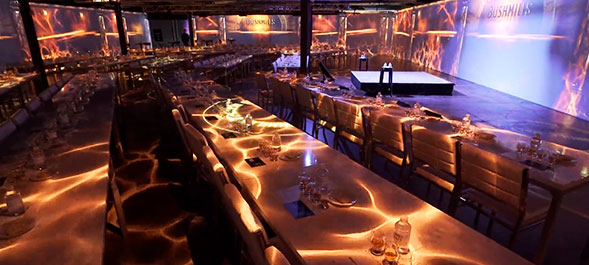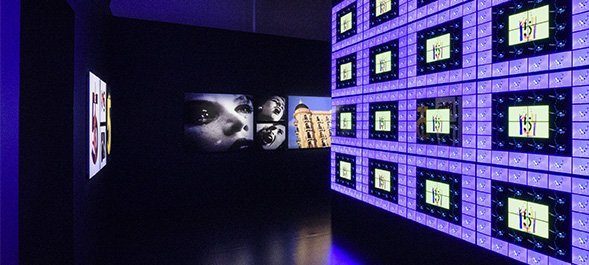Client: Nike
Lead agency: Auditoire
Workflow development & technical coordination: WB
Technical partner: 61FPS
LED wall provider: Alabama Média
Installation: JARNIAS
Nike at the Centre Pompidou: Modulo Player powers an impressive LED display and its content management solution
From July 13 to August 11, 2024, the iconic facade of the Centre Pompidou came to life with a giant LED screen celebrating sport and culture. This unique display, a collaboration between Nike and the Parisian museum, involved 61FPS who created previsualization and content management tools. To enable the display of dynamic content during the Summer Olympics, 61FPS tools were seamlessly interfaced with Modulo Pi’s Modulo Player media server.
For the Paris 2024 Olympics, the facade of the Centre Pompidou was transformed with a massive 5,400 sqm LED screen, the result of a creative collaboration with Nike. The giant digital canvas was designed to offer a unique visual experience, presenting videos and animations that celebrated art and sport.
The installation posed a number of technical challenges, managed by 61FPS , a Nantes-based company specializing in unusual creative projects, in collaboration with WB.
Media rendering was one of the primary challenges. To avoid obstructing the panoramic view offered by the Paris museum to its visitors, the imposing LED wall supplied by Alabama Média had a 4 cm pitch. The 5,400sqm LED curtain achieved nearly 4K resolution despite the vast size required to cover the building’s facade.
Brightness was another key factor, as the display needed to broadcast vibrant content in the peak daylight of summer. Louis Voreux, Developer at 61FPS, explains: “The Centre Pompidou faces due west, so there were concerns about the content visibility during the day and in bright sunlight.”
To address these concerns, the 61FPS teams developed a previsualization tool that simulated the audience’s view under various weather conditions and times of day. The tool ensured the content to be display would be clearly visible regardless of the lighting and weather conditions.
Another major challenge was the possibility of incorporating dynamic media linked to the live Olympic events happening across Paris. “Since the experience was taking place during the Olympic Games, our goal was not only to celebrate art and sport, but also to display content that reflected the unfolding events, being responsive between what was happening in the city and the on-screen display” notes Louis Voreux.
Content was produced by Nike’s in-house studio, as well as other partner studios in the U.S. and the UK. To manage and verify all assets before being displayed on the museum’s façade, 61FPS developed a dedicated CMS, interfaced with several Modulo Player media servers by Modulo Pi.
The setup included a primary Modulo Player server, a server dedicated to “fresh media”, and a backup server. The aim was to produce, validate and distribute media as quickly as possible.
Thanks to the pipeline established by 61FPS in collaboration with WB, content from all studios was centralized in the CMS designed for the project. “The objective was to have a single source of truth with a space where all parties could upload their content” adds Louis Voreux. “The broadcast team could then check that all files respected the required format, frame rate and codec.”
All media used the NotchLC codec, newly supported by Modulo Player. Once reviewed in the project’s previz tool, the content could be validated and versioned by decision-makers.
Following the content approval, the CMS developed by 61FPS was used to organize the media into playlists. Through the support of the WebSocket protocol, the Modulo Player media server easily interfaced with the CMS, enabling validated content and its playlists to be seamlessly sent to Modulo Player. These playlists, complete with transitions and timings, were then ready to be broadcast by the media server.
“We needed that flexibility, and to be able to change playlists throughout the day. Modulo Player met our needs perfectly. The solution is user-friendly, and there’s a solid pool of trained operators in the field,” notes Louis Voreux.
Thanks to the tools designed by 61FPS and the WebSocket-enabled interfacing with Modulo Player, content could be produced and delivered to the public in under an hour. The massive digital canvas on the Centre Pompidou provided a dynamic, optimized display throughout the summer.












